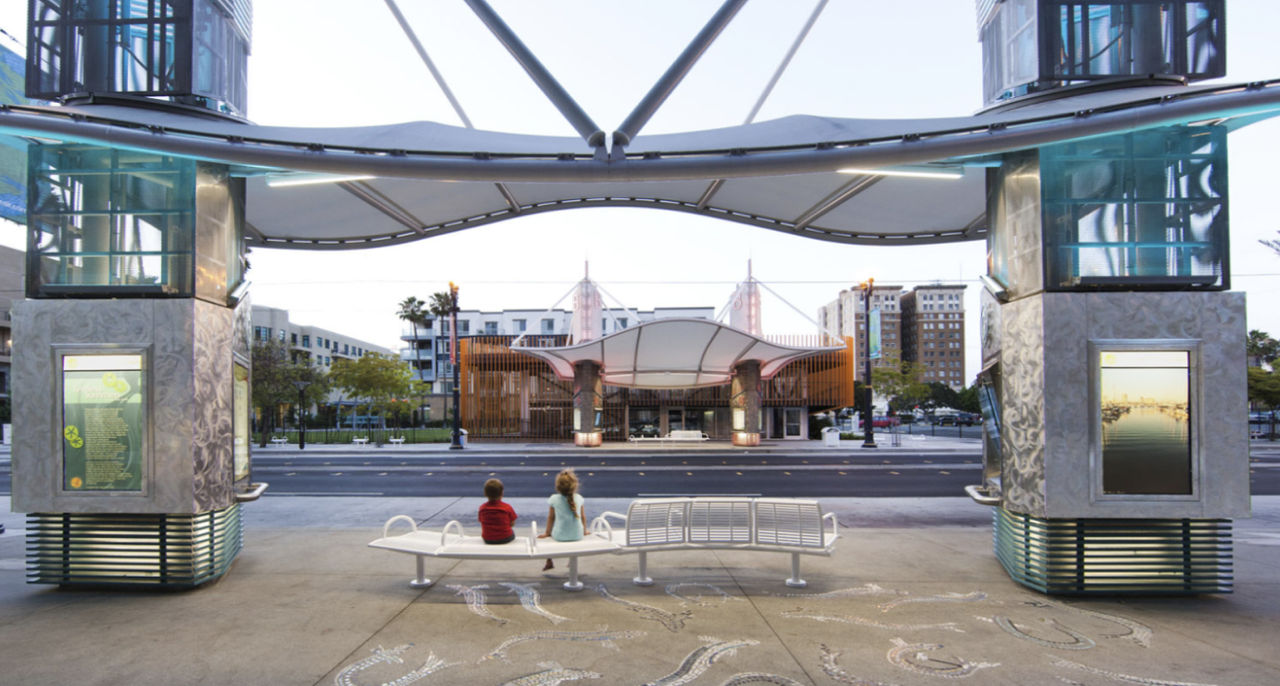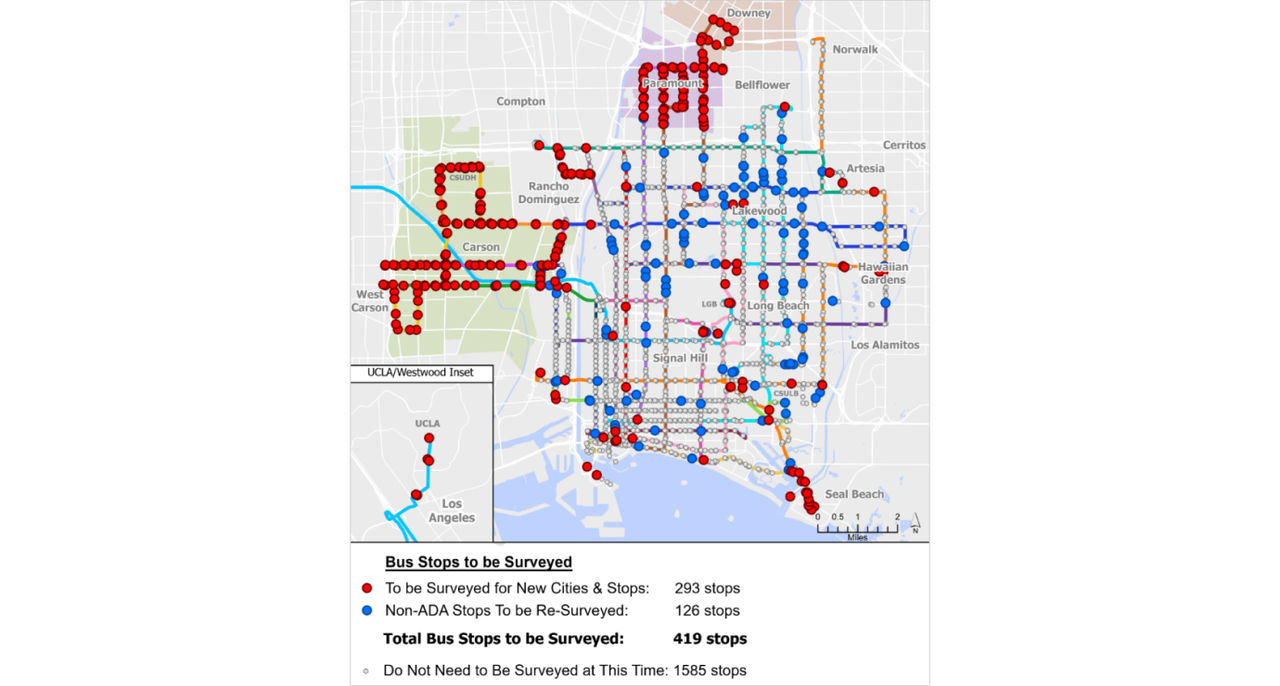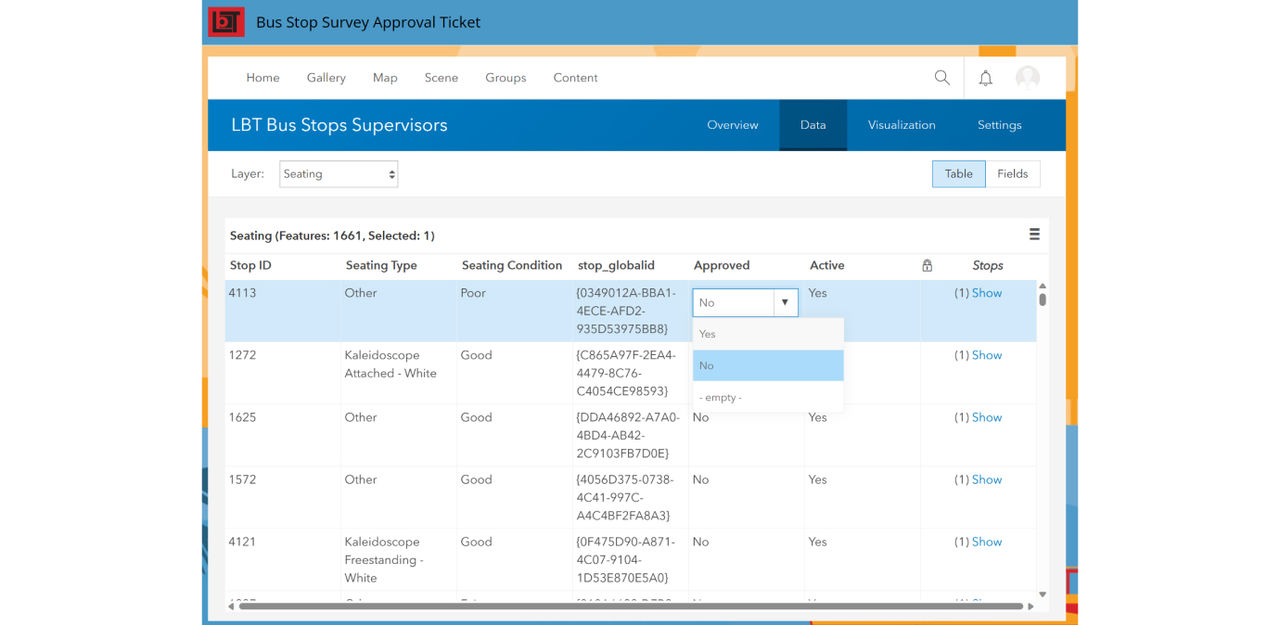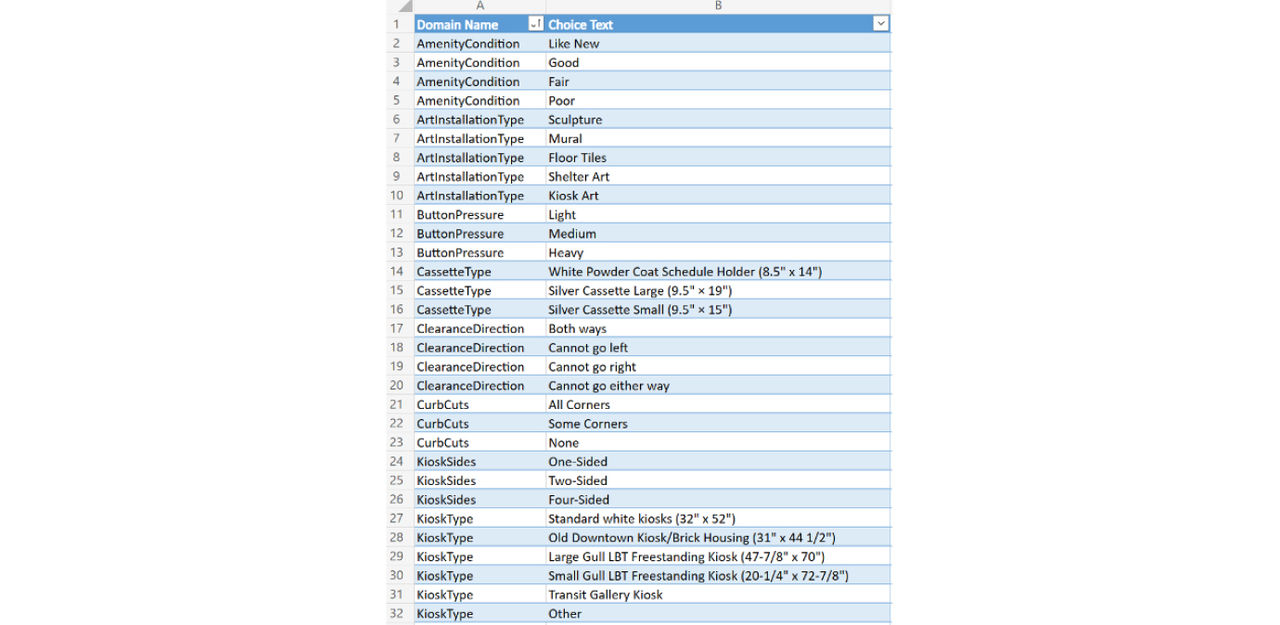case study
Long Beach Transit Leverages ArcGIS Field Maps to Enhance Bus Stop Safety and Atmosphere
Have you ever thought about how the bus stops you might sit at each day while you wait for your ride are actually maintained for your comfort and safety? Public transportation in the Los Angeles area is an essential service for many people's everyday lives. Long Beach Transit has a mission to ensure everyone feels safe and can enjoy the entire bus experience, from waiting for the bus to reaching their final destination. In early 2022, Long Beach Transit was looking for solutions to better maintain the condition of its bus stops and bus stop amenities to provide exceptional service for residents.

GIS: A Foundation for Transit Operations
Long Beach Transit (LBT) is a municipal transit company that provides bus transportation in Los Angeles and Orange counties. The agency has a fleet of 250 buses across 14 cities that cover 100 square miles. LBT has a ridership of more than 23 million customers.
LBT uses geographic information system (GIS) technology to generate both interactive and static route network maps and analyze ridership patterns across its service area. GIS supports its transit business by enabling staff to plan, maintain, and locate transit infrastructure. GIS staff regularly fulfill map and data requests and keep GIS databases and web maps up-to-date as bus timetables and routes change.
Providing a Solution for Accurate Data Collection
LBT has over 2,000 bus stops in its service area. While its Transit Customer Amenities (TCA) Department is responsible for maintaining the cleanliness of each bus stop, it has faced some challenges. Issues include maintaining an up-to-date database of site conditions, ensuring ADA accessibility, and making sure amenities are maintained and available at each bus stop. The condition information about the bus stops is critical and necessary for making decisions, such as which bus stops need improvements.
TCA had a legacy solution that provided access to the bus stop data but was looking for additional tools to help make its employees' jobs easier.
Back in 2012, LBT developed a bus stop survey that contained basic information about bus stops. After using the old system for over 10 years, the staff knew exactly what they wanted to change. They needed a solution that would help minimize data entry errors during the field data collection and have a new option for capturing photos. Attaching pictures would help staff record details of the visual conditions at specific locations. They also wanted a more streamlined, user-friendly application interface. By standardizing the wording of the amenity inventory, they could reduce data entry errors, such as typos and inaccurate descriptions. The plan was to develop a database better suited for storing the complex infrastructure relationships (one-to-many relationships)—then, design an application allowing supervisors to review and approve work. It was also important to add better tracking of data associated with bus stop amenities. LBT used Esri's ArcGIS Field Maps, along with a customizable survey template, to develop a bus stop survey application prototype.
 The first step was understanding the locations of all bus stops and which needed to be surveyed.
The first step was understanding the locations of all bus stops and which needed to be surveyed.
Supporting Data Collection in the Field and Back-Office Operations
A solid foundation for the project was built by cleaning and loading existing data into a new database. The data was organized into 14 related tables covering a wide variety of information, such as passenger amenity types, amenity conditions, comments, and pictures. Then, crucial data regarding Americans with Disabilities Act (ADA) compliance was incorporated. To further enrich the dataset, traffic condition data was added, including site conditions such as the stop area location and pedestrian crosswalks.
 Supervisors can view bus stop survey results.
Supervisors can view bus stop survey results.
A field data collection application was created using ArcGIS Field Maps to empower LBT staff with a data collection app that would minimize user input errors, archive data, and allow easy data capture.
Offline data collection is built into the Field Maps app. Once a mobile user is reconnected to the network, the local data stored in the app is uploaded to the ArcGIS Enterprise portal. Then, after the sync, a supervisor can view the approval screen, where all the new or edited records are presented in an intuitive table format, ready to approve.
Streamlining Service Planning
 The Service Planning Bus Stop Web Application allows staff to view bus stops, assets, and amenities.
The Service Planning Bus Stop Web Application allows staff to view bus stops, assets, and amenities.
More advanced functionality is available with the Service Planning Bus Stop Web Application when staff is on-premises. The Bus Stop Web App is a web map containing current LBT stops, active routes, and historical ridership data combined with the new bus stop amenity data. The progress of staff working in the field is easily visualized by viewing the color of the bus stops. By clicking the map, staff can quickly review a stop's amenity data contained in pop-up menus.
Three times a year, LBT makes service changes to its service network. To facilitate these recurring service changes, the solution also includes functionality to automatically add new stops and inactivate old stops if a new service change is initiated.
 LBT's system architecture allows easy data processing from data captured in the field to back-office staff.
LBT's system architecture allows easy data processing from data captured in the field to back-office staff.
Clean Bus Stops, Clean Data
Like in every complex project, there were some obstacles to overcome. A challenge arose when incorporating old 2012 amenity data. The data was collected as one big database table with no relationship classes. Specific amenities had multiple values and duplicate entries. To load the old data into the new normalized tables, an extract, transform, and load (ETL) model was designed that appended and split data as needed for the improved schema. Data cleanup tasks, such as standardizing to coded value domains, were automated, resulting in a tidy dataset with increased data integrity.
 This example of the back-end survey values shows how the field data collection tool helps prevent users from making spelling/formatting errors.
This example of the back-end survey values shows how the field data collection tool helps prevent users from making spelling/formatting errors.
Prioritizing GIS Expertise and Cloud-Based Solutions
In addition to the GIS technology, LBT relied on Quartic Solutions, a woman-owned Esri business partner and premier GIS services firm, to provide GIS staffing and expertise. With Quartic Solutions and GIS, LBT was able to address and resolve the complications with its previous legacy software and develop solutions that would allow it to improve its operations and service. The project team architected a cloud-based solution using Amazon Web Services (AWS) infrastructure and Esri ArcGIS.
Successful Journey
With the data being collected and turned into an easy-to-read format, LBT can provide up-to-date bus stop amenity and ADA information to the public and transit customers. LBT staff can more easily identify which bus stops have accessibility improvements and the condition of those improvements. They can collaborate with related government agencies, such as municipal public works departments, to better prioritize crosswalk and sidewalk pedestrian improvements.
The restructured data and new application architecture were tested in June 2022 by LBT staff by collecting bus stop amenities and ADA information. The test used the Metro Route 130 service transition to LBT Route 141. The first stage of systemwide fieldwork will begin in the summer of 2023.
Based on the successful conclusion of the prototype project, LBT will consider planning a larger systemwide implementation and rollout, incorporating the updated bus stop data into LBT's GIS databases alongside General Transit Feed System (GTFS) network, land-use, ridership, and demographic information.
This is an example of how GIS technology can support transit operations and ultimately make public transit safer and more enjoyable for everyone.